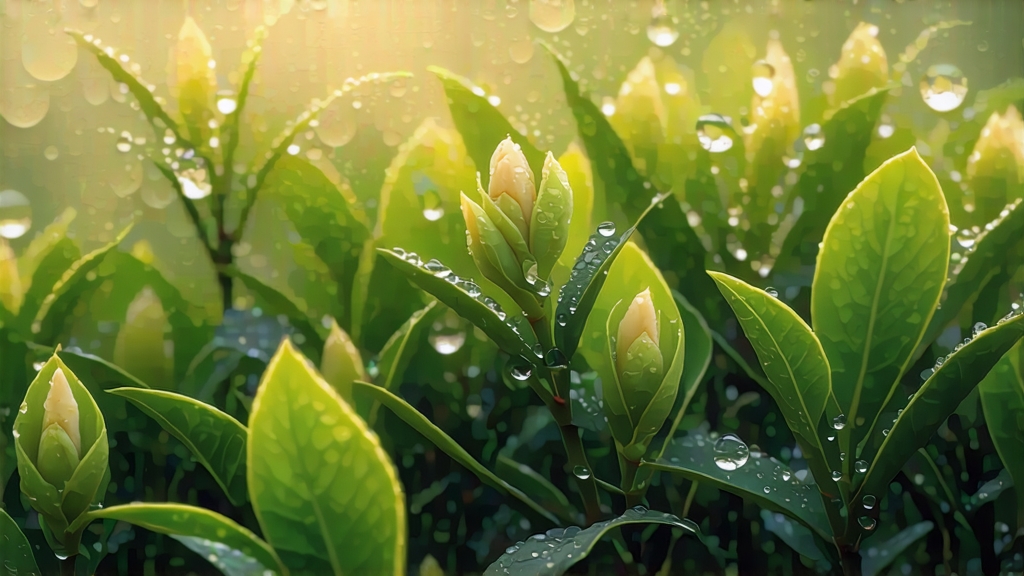
When early March fog still clings to the coastal mountains of northern Fujian, tea pickers climb the granite ridges of Taimu Mountain before the sun has burned away the night’s chill. In baskets woven from thin bamboo strips they place nothing but unopened leaf buds, each one still wearing its winter coat of silvery down. These buds are the sole ingredient of Bai Hao Yin Zhen—literally “White Hair Silver Needle”—the most revered expression of Chinese white tea. To international drinkers the name may sound poetic, yet every syllable is botanical fact: the tiny hairs (hao) that protect the embryonic leaf are the color of polished silver, and the finished tea does indeed resemble a pile of slender needles. What follows is an invitation to understand why this quiet, minimally processed tea has captivated Chinese emperors, London tea merchants, and contemporary sommeliers in equal measure.
Historical whispers
White tea as a category enters written records during the Song dynasty (960-1279), when the imperial court demanded “white” tribute teas whose buds were steamed, pressed, and molded into cakes stamped with dragon motifs. Those cakes, however, were green teas in disguise; the term “white” referred to the light color of the liquor, not to the processing method we recognize today. True bud-only white tea emerged in the late eighteenth century among monks at the Taimu shan temples who discovered that buds left to wither in mountain shade lost their grassy edge and acquired a mellow, honeyed fragrance. By 1796 the Qing court listed “Yin Zhen” among its birthday tributes, and European ports first recorded cargo labeled “Pekoe Tips” in 1838. Because the buds weigh almost nothing, early foreign buyers paid more for one chest of Silver Needle than for an entire shiphold of black tea, cementing its reputation as a luxury curiosity. During the 1930s Fuding county established state-run withering sheds wired with electric fans—an early marriage of traditional craft and industrial airflow science that still shapes production today.
Micro-terroir: why Fuding matters
Chinese law protects “Fuding White Tea” as a geographical indication, and within Fuding the hamlets of Guan Yang, Dian Tou, and Tai Mu produce the most sought-after needles. The region’s red-yellow lateritic soil is porous and slightly acidic, forcing tea bushes to struggle and thereby concentrating amino acids in the buds. A maritime monsoon climate delivers 160 foggy days per year; the diffused sunlight lowers photosynthetic intensity, increasing the bud’s L-theanine content and the signature cooling “mountain rhyme” (yinyun) that lingers in the throat. Local small-leaf cultivars—Fuding Da Bai Hao and Fuding Da Hao—develop buds that are plumper and more downy than those of neighboring provinces, giving the finished tea its tactile “velvet needle” feel.
Plucking ritual: one dawn, one bud
The picking window for authentic Silver Needle spans roughly ten days in mid-March, when the average daytime temperature hovers between 15 °C and 20 °C and the bud measures 2.5–3 cm without yet unfurling into a leaf. Experienced pickers use a silent “twist and lift” motion that severs the bud at the abscission layer without squeezing sap onto the hairs; any bruise will oxidize into an unsightly brown spot during withering. A full day’s work yields barely 500 g of fresh buds, which shrink to 100 g after drying—one reason why Silver Needle costs more than many vintage wines.
Withering: the art of doing almost nothing
Unlike green tea, whose enzymes are killed by pan-firing, or black tea, whose cells are ruptured by rolling, Silver Needle is coaxed into maturity by nothing more than time, air, and subtle shifts in moisture. The freshly harvested buds are spread in single layers on bamboo trays stacked inside a sun-lit corridor called a “qing qiang.” For the first six hours the ambient humidity is kept at 65–70 % so that the cuticle softens; master tea makers then open louvered windows to drop humidity to 45 %, encouraging gradual dehydration. At night the trays are moved onto heated wicker racks kept at 28 °C by charcoal embers buried in ash—an ancient thermostat that prevents the buds from picking up attic-like